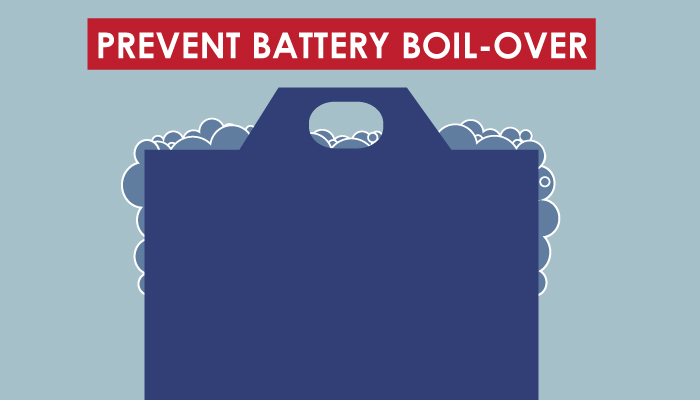We use cookies to make your experience better. To comply with the new e-Privacy directive, we need to ask for your consent to set the cookies. Learn more.
Prevent Boil-Over with Forklift Battery Watering Tools
Forklift battery boil-over is sometimes accepted as a standard risk of battery room management, but overflow incidents are far from unavoidable. In fact, if your operation has encountered multiple boil-overs this year, you should evaluate your equipment and make sure that you’re adequately outfitted.
Boil-overs are dangerous for workers — and expensive for facilities. When battery acid contacts a sealed floor, it quickly eats away at the seal, causing long-term damage that eventually necessitates floor replacement. As we’ve covered in other articles, battery rooms require perfectly flat and level floors, so repairs or replacement can be prohibitively expensive.
Battery acid can also damage lift trucks and battery casings, so to safely operate your facility, you need to manage your risks. That means educating employees, but it also means working with the right tools.
Choosing the Right Battery Watering Tools for Your Lift Truck Fleet
In the United States, about 70 percent of batteries are filled by hand, so in most facilities, workers are solely responsible for watering forklift batteries properly. Human operators will eventually make errors — even with proper training.

-
Use Dedicated Battery Watering Devices
Always use water carts and water guns designed specifically for forklift batteries. This extends the life of your equipment, reduces worker fatigue, and keeps your facility safe.
Your watering equipment should have an automatic shutoff to prevent overfills, along with some sort of visual indicator. BHS watering carts like the WC-HYDRO-20-KIT feature Instant Valve Pro signals, which alert the operator when the injectors have shut off. The BHS Bladder Tank allows operators to fill batteries without electricity, so it’s an excellent option for mobile applications.
The BHS Water Gun (WG-X) has a non-electric automatic shutoff, a fast flow rate, and an angled nozzle for superior ergonomic performance.
-
Make Sure Batteries and Battery Watering Equipment are Accessible
Your facility should be equipped with enough battery watering devices; heavily used batteries should be watered about once per week, so make sure that your battery room is adequately outfitted.
-
Train Operators Carefully
Many operators make mistakes by adding water prior to a charge. Battery water should always be added after an equalizing charge. Filling before a charge can result in an accidental overfill, so even if you’re using appropriate watering equipment, you’ll still need to train your staff to fill at the appropriate times.
-
Take Operators Out of the Equation
If your facility has a large lift truck fleet, the BHS Integrated Water System is an excellent investment. It eliminates manual battery watering entirely by working with the battery charger and automatically initiating the watering process after the charge.
The IWS prevents overfills and boil-overs while eliminating quite a bit of manual labor. It’s an excellent tool for extending the life of your equipment and versatile enough for most common watering strings.
Finally, to keep batteries in good condition, make sure to monitor them frequently. Tools like the Fleet Tracker can help you complete routine maintenance and reduce the overall cost of your lift truck fleet over time.
Proper equipment requires an investment, but it’s money well spent. For the relatively low cost of high-quality battery watering equipment, you can prevent forklift battery boil-overs entirely and run a safer, more productive battery room.
References:
Vanasse, Harold. “Other Voices: The major impact of watering on battery room operations and maintenance.”MMH. Peerless Media LLC, 10 Sept. 2015. Web. 27 Feb. 2016.
